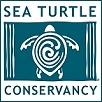 |
 |

Amie Update: Data indicates that Amie nested the night following her tagging in Gulf Islands National Seashore’s Fort Pickens Area. She then moved offshore and to the west. Data indicates she may then have nested in Alabama just outside of Bon Secour National Wildlife refuge on the morning of August 6th, 2003. She then moved just offshore and transmissions continued until August 9th, 2003. Then no further transmissions were received. Staff and volunteers were disappointed and speculated why transmissions had stopped.
Then on October 20th, 2003 at the Celia Reef (an artificial reef that is made of metal and tetrahedral in shape) Amie’s transmitter was located by an Escambia County diver on an inspection dive. The transmitter was found on the sand bottom immediately adjacent to the structure and was in close proximity to the remains of a marine turtle, which were within the reef. It is speculated that the turtle gained entrance to the structure through a space between the sand bottom and the bottom of the metal framework. This tetrahedral shaped framework is open in appearance and allows a view of the surrounding waters. However, the spaces in the framework were not large enough for a turtle to escape.
Researchers originally thought that the dead turtle was Amie, but were delighted to come across Amie nesting (without her transmitter) in 2005! It appears that Amie did enter the structure and dislodged her transmitter while inside, but was able to exit the artifical reef. Unfortunately the turtle remains suggests that not all sea turtles are as lucky as Amie and can become confused and either can not locate the area where they had gained access or repeatedly attempted to exit through the spaces at the top of the tetrahedral shaped structure, and therefore could not exit the structure and succumbed.
A good news side note: Amie’s nest that was laid at Fort Pickens hatched on Sepetmber 25, 2003 and 115 of the 120 eggs that were laid produced hatchlings. Staff/volunteers witnessed (due to light pollution most nests are watched closely) 113 of the 115 hatchlings enter the Gulf of Mexico. Escambia County will be reviewing the dimensions of artificial reefs to ensure current and future reefs will not act as traps for turtles.